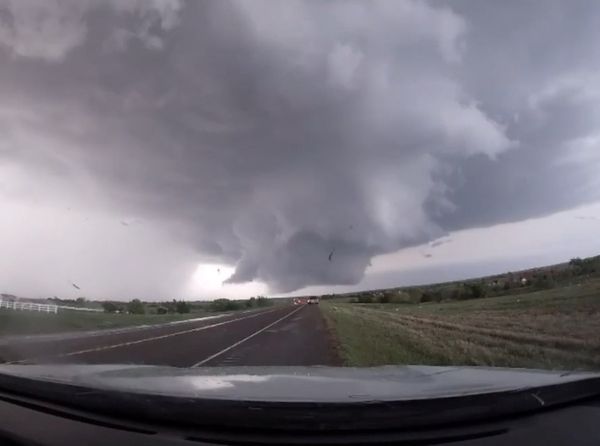LOS ANGELES — Drained reservoirs. Dwindling snowpack. Bone-dry soils.
After a record-dry start to 2022, California water officials announced Friday that they were cutting State Water Project allocations from 15% to 5%, and warned residents to brace for a third year of drought.
The news came only months after a rainy December offered temporary drought relief and prompted officials to announce a modest increase in previously allocated supplies to 15%. But after the driest January and February on record — and a March on track to follow suit — officials said they had to cut it down.
“We are experiencing climate change whiplash in real time with extreme swings between wet and dry,” Department of Water Resources Director Karla Nemeth said in a statement about the change. “That means adjusting quickly based on the data and science.”
The State Water Project is a complex system of reservoirs, canals and dams that acts as a major component of California’s water system, feeding 29 water agencies that together provide water for about 27 million residents. Officials said they will continue to provide critical health and safety needs for the agencies in addition to the 5% allocation.
Other water sources for the region, such as the Colorado River, are also suffering from drought, which experts say has been intensified by climate change. The American Southwest has experienced the driest 22 year period in 1,200 years.
Given the current conditions, Heather Cooley, a water researcher at the Pacific Institute, said the state’s decision makes sense.
“Reservoirs are low, the snowpack is low, so we’re not going to see much refilling of those reservoirs as the snow melts, and as a result we just have less water to go around,” Cooley said Friday. “I do think a reduction in the allocation is appropriate and warranted.”
The reduced allocation is being met with increased calls for conservation. Earlier this week, officials with the State Water Resources Control Board announced that Californians significantly backslid in their efforts to save, and in fact used 2.6% more water in January compared to the same month in the baseline year of 2020.
In July, Gov. Gavin Newsom called on all state residents to voluntarily reduce water usage by 15%. Californians came far short of that target, with about 6.4% savings between July and the end of January, data show.
Yet Newsom has so far stopped short of instituting mandatory restrictions — something previous Gov. Jerry Brown did about two years into the last drought.
Cooley, of the Pacific Institute, said a statewide mandate from Newsom is overdue.
“I think we need a mandate,” she said. “It’s a call to action. It really sends a message — and it’s important message — that this is a serious drought, and we need to be taking proactive measures to save our water.”
Already, supplies are shrinking rapidly in response to the drying conditions. As of Friday, statewide snowpack had fallen to 57% of average for the date, most of which came from the heavy snowstorms in December, officials said.
Meanwhile, statewide reservoir levels were about 70% of average.
As a result, managers plan to prioritize water releases from Lake Oroville — the State Water Project’s largest reservoir — to “maintain Delta water quality, protect endangered species and meet senior water right needs,” the Department of Water Resources said.
Last year, drought conditions compelled officials to shut down Lake Oroville’s hydroelectric power plant for the very first time since its completion in 1967. It came back on at the start of the year after December’s storms.
On Friday, the Department of Water Resources said it will also submit a revised “temporary urgency change petition” that will enable deviations from typical water rights and usages through June, essentially allowing officials to release less water into the Delta and conserve stored water in the Oroville, Shasta and Folsom reservoirs.
A similar petition submitted earlier in the year was withdrawn after December storms, but the “new application is necessary due to dramatically changing conditions,” officials said.
They are also planning to refill a notch in the Emergency Drought Salinity Barrier in the Delta, which will allow for reduced flows from upstream reservoirs through the end of November.
Officials have fewer and fewer options after the dry start to the year. March, typically the last month of California’s “rainy season,” is likely to end on a dry note, according to a precipitation outlook from the National Oceanic and Atmospheric Administration.
Meanwhile, the U.S. Drought Monitor shows that much of the state is under severe drought conditions, with an increasingly large area slipping into the “extreme drought” classification.







